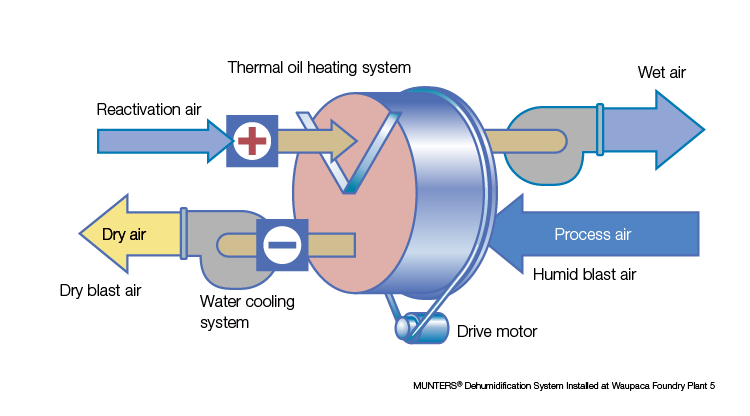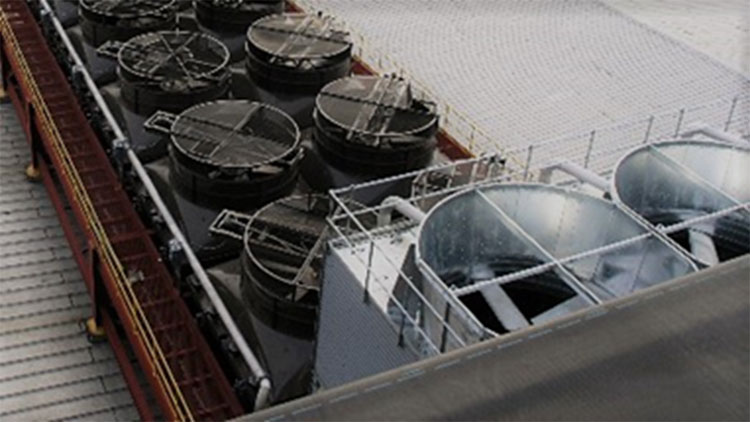The Hitachi Metals Group's Waupaca Foundry (WFI) in the United States produces castings that are mainly used as automotive parts. Manufacturing castings requires a great deal of energy for the metal melting processes. To contribute to making society more sustainable, WFI has formulated an original vision and achieved significant results with the aggressive enhancement of energy management and energy-saving measures. Through high-quality efficiency management and operations, WFI's Plant 1 in Waupaca, Wisconsin, was the first foundry in the United States to acquire ISO 50001*1 energy management systems certification, and has remained certified since. WFI has also made efforts to reduce CO2 emissions at other plants in accordance with the equipment at each location, and have cut CO2 emissions 15% compared with fiscal 2018.
Plant 5 in Tell City, Indiana, produces 250,000 tons of castings for automobiles annually using two cupola furnaces. When the blast air to burn coke in the cupolas is highly humid, more coke is used while burning efficiency and burning temperature decreases, making the cupolas less efficient. WFI therefore installed a blast dehumidification system using a desiccant wheel to remove moisture from external air before it is preheated in a recovery heat exchanger for use as blast air. With this system, the amount of coke used was reduced by 2.5% (600 tons) and CO2 was cut by 1,902 t-CO2 in fiscal 2019. This represented a decrease of 0.7% in the total amount of energy used at Plant 5 compared with the previous fiscal year.

Plant 2/3 in Waupaca, Wisconsin, produces 445,000 tons of castings annually, mainly for automobiles. Winters are cold in Waupaca, and 70% of the natural gas consumed at this plant is used to heat buildings and water. This has a considerable environmental impact.
To reduce the amount of natural gas used in winter, a system to recover heat from melting furnaces was installed in fiscal 2012. Using this recovered heat as a heating source for buildings cut the amount of natural gas used at this plant by 1,588 km3 annually. In fiscal 2019, to increase the efficiency of the system, the thermal storage air units were upgraded, the piping connectors were switched from serial to parallel, and a new control system equipped with a monitoring function was introduced. This increased system efficiency by 43% compared with the previous fiscal year, and saved 680 km3 of natural gas annually. The heat recovery measures implemented in these two projects led to a savings of 2,268 km3 in the amount of natural gas used annually and cut CO2 emissions 5,066 t-CO2. These efforts were recognized by the Wisconsin state energy efficiency program "Focus on Energy," and an incentive equivalent to 50% of the fiscal 2019 investment cost was received from the program.
